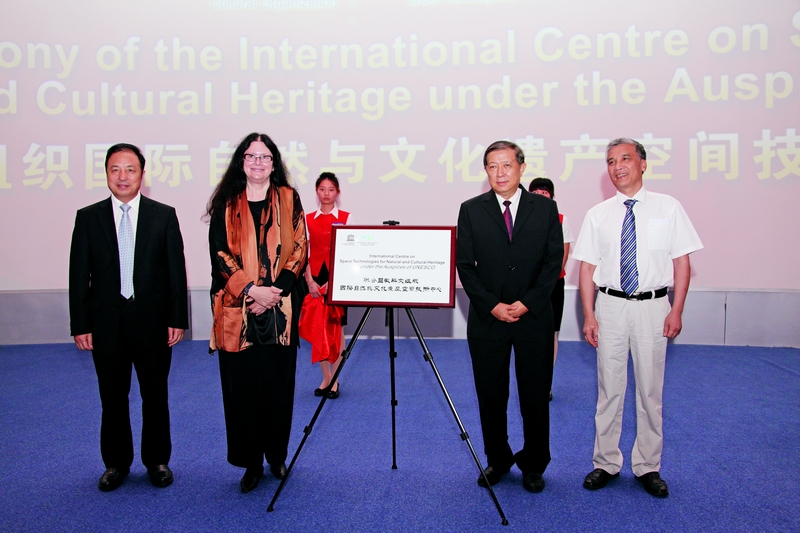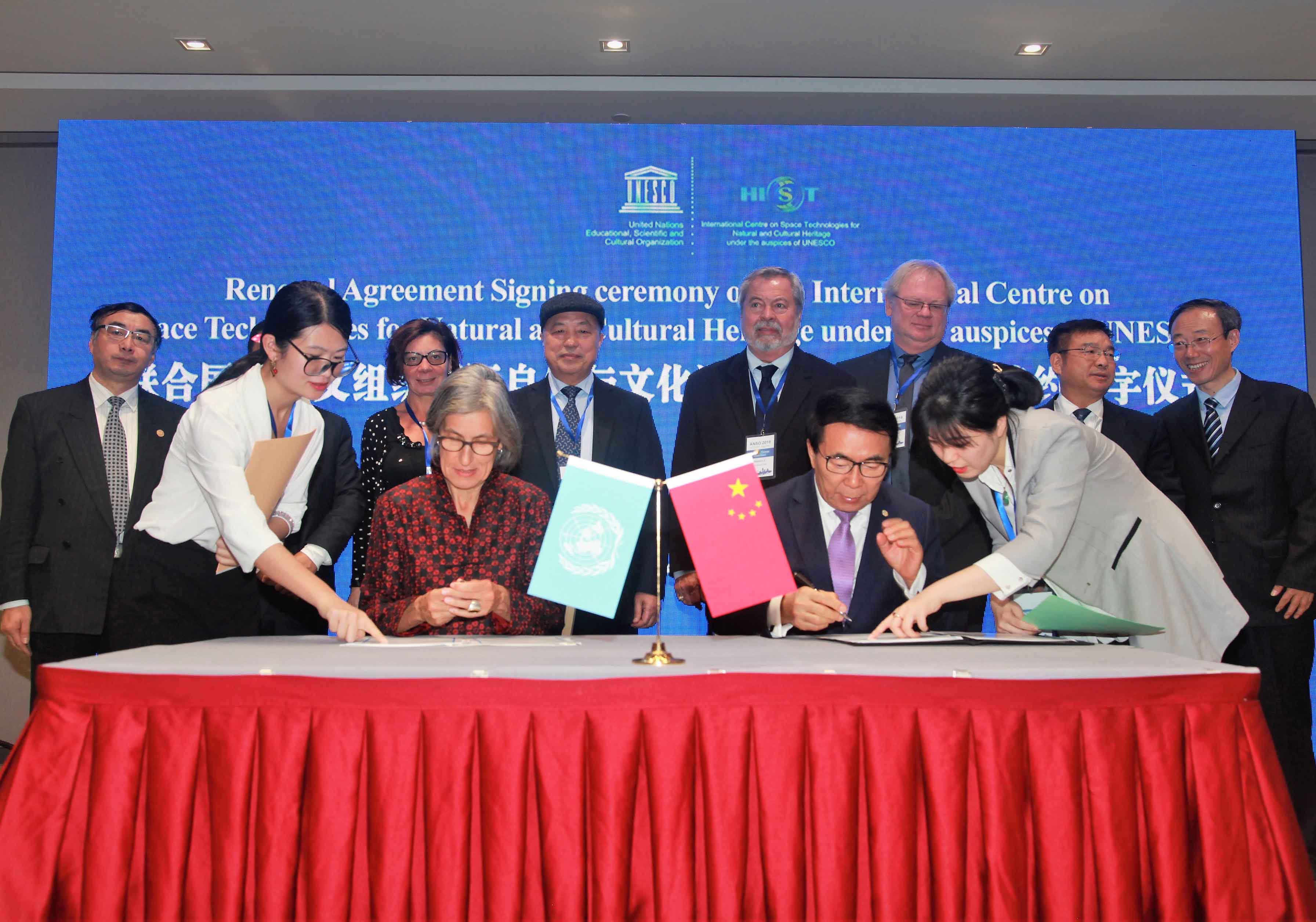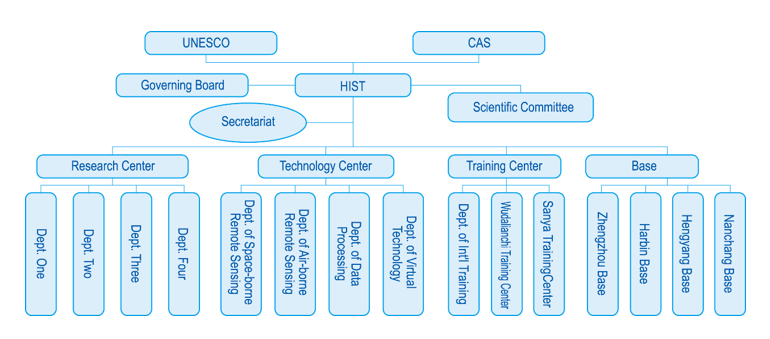International Centre on Space Technologies for Natural and Cultural Heritage under the auspices of UNESCO
INTRODUCTION
The International Centre on Space Technologies for Natural and Cultural Heritage (hereafter abbreviated as HIST) is the first UNESCO Category 2 Centre dedicated to promoting, testing and demonstrating the applications of space technologies for the conservation, management and sustainable development of globally significant natural and cultural heritage, biosphere reserves and geoparks (hereinafter called “UNESCO-designated places”). Its establishment was approved by the 35th session of the UNESCO General Conference in 2009. An agreement for the establishment of HIST was signed in June 2011 and its formal operations began in July 2011 following the finalization of all internal administrative formalities in China.
HIST successfully completed its first six years (2011-2016) of operations in 2017. An evaluation was undertaken by UNESCO in December 2016. As a result, the UNESCO Executive Board, at its 202nd session held in Paris, France, in October 2017, decided to renew the status of HIST as a category 2 centre under the auspices of UNESCO for another 6 years from 2018 to 2023.
HIST would continue to cement cooperation with UNESCO member states, in particular the developing countries in Asia, Africa and small island countries on the use of space technologies for the UNESCO designated places.

Opening Ceremony of HIST (24th July, 2011)

Signed HIST second-term Cooperation Agreement(04 Novermber,2018)
VISION
HIST’s vision is to make full use of space technologies for better identification, conservation, management and sustainable development of natural and cultural heritage of humankind.
MISSION
HIST’s mission is to assist UNESCO’s programme and Member States, that desire to receive such assistance, on the use of applied space technologies for UNESCO’s activities with respect to natural and cultural heritage, biosphere reserves and geoparks.
OVERALL OBJECTIVE
To strengthen the capacity of UNESCO member states to manage the sustainable development of their natural and cultural heritage, biosphere reserves and geoparks accommodating the impacts of climate change and natural disasters, through the use of earth observation technologies and through education.
ORGANIZATIONAL STRUCTURE
Under the instructions of UNESCO and CAS, with the Governing Board as its decision-making body and the Scientific Committee as its advisory body, HIST is composed of a Secretariat and three Centers of Research, Technology and Training, and three bases.

For more information: The International Center on Space Technology for Natural and Cultural Heritage (HIST)



International